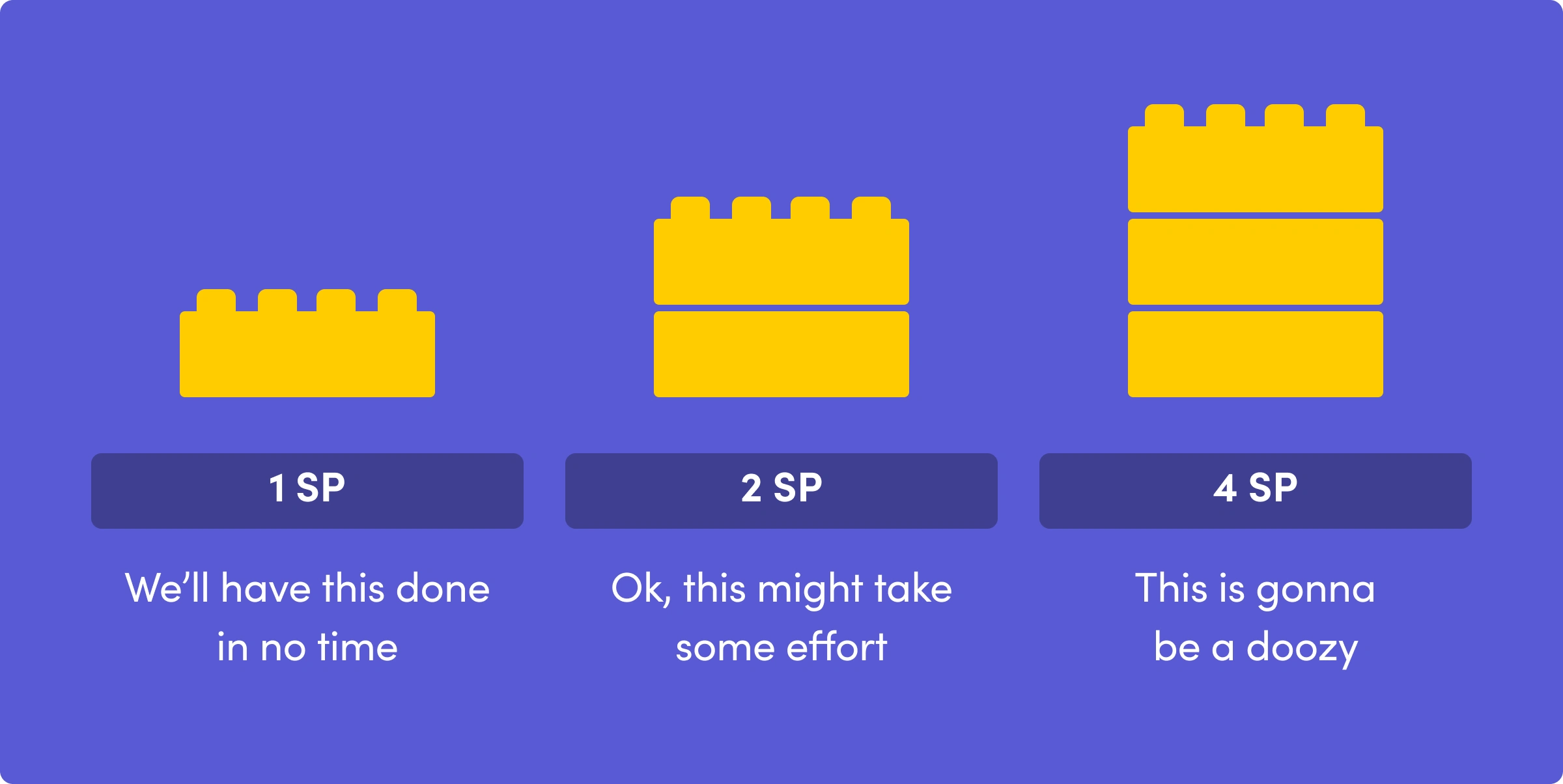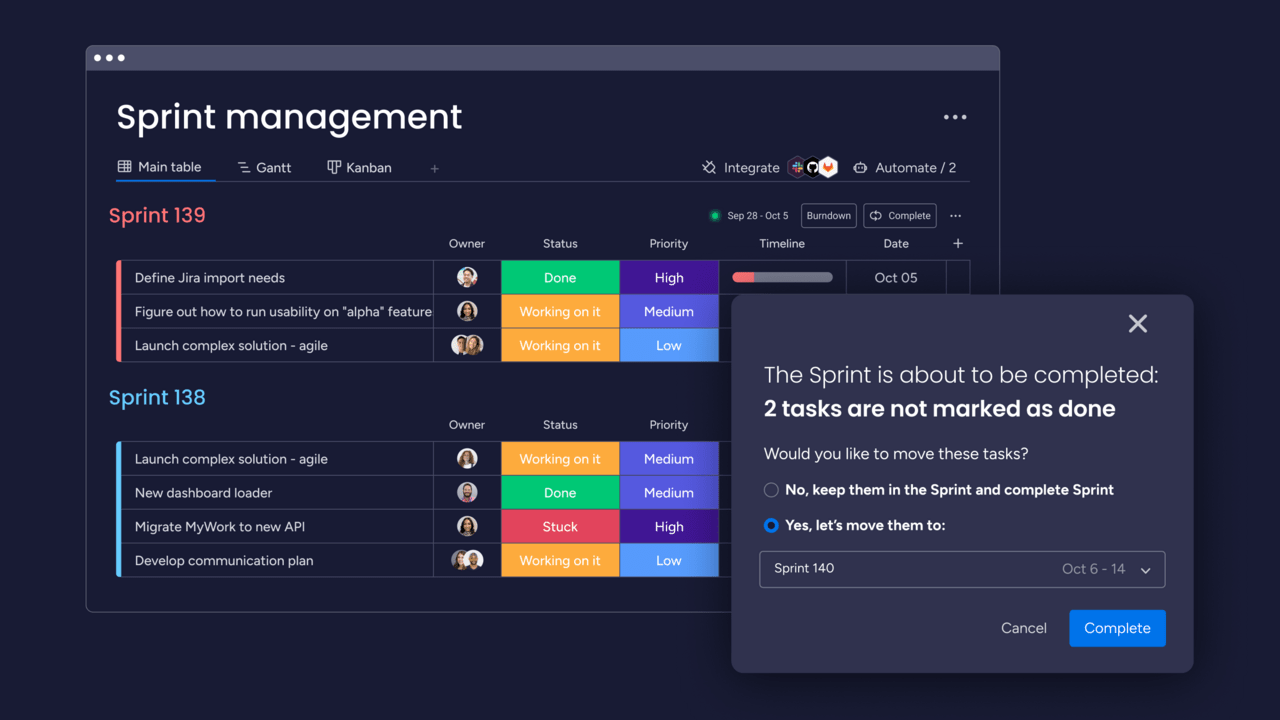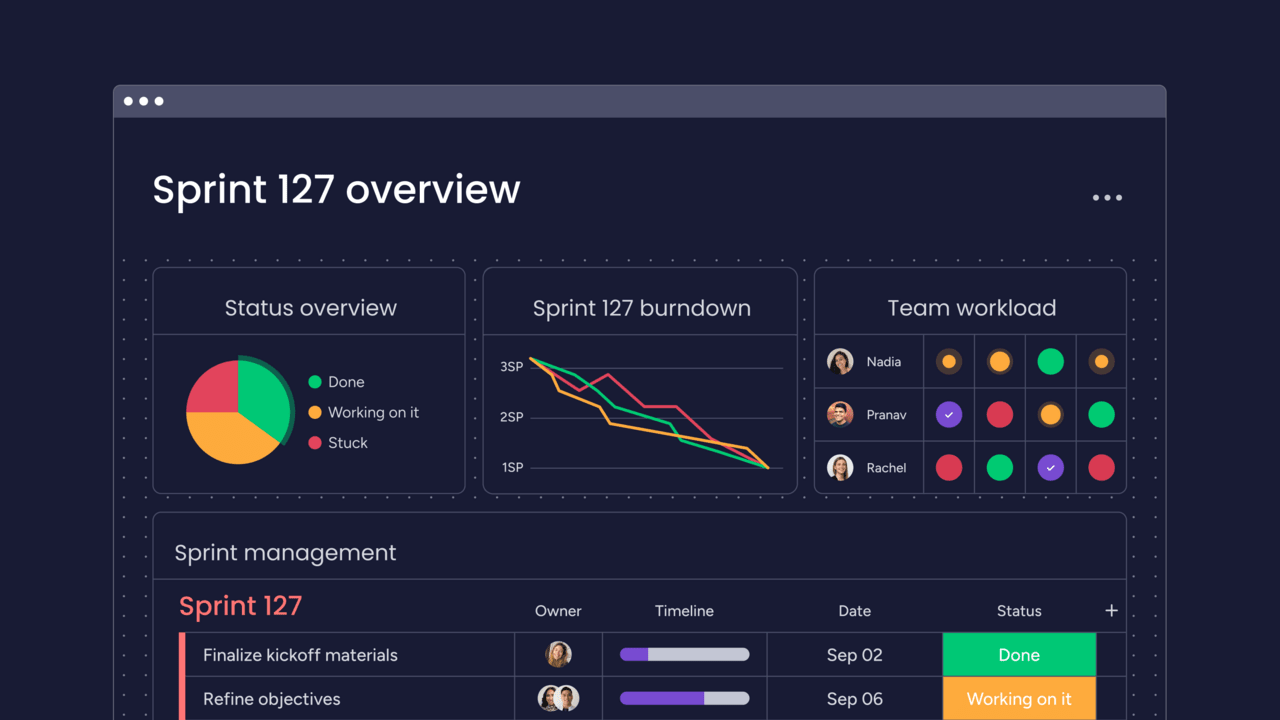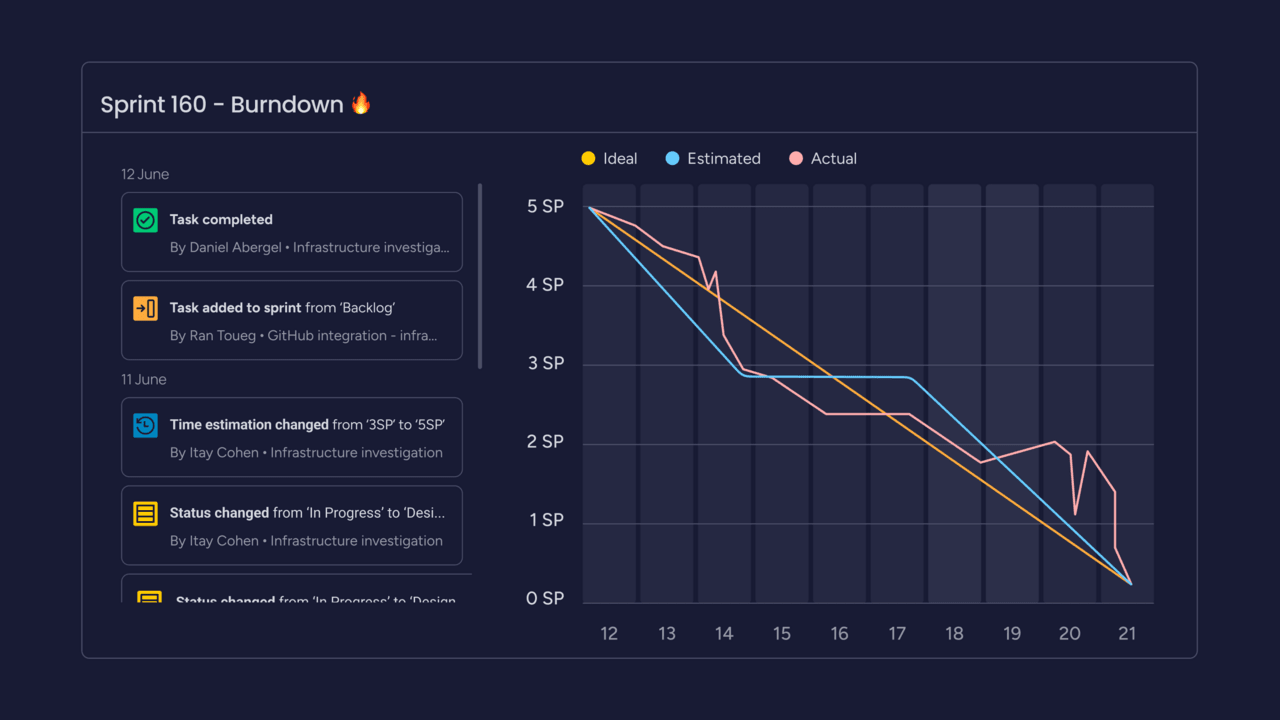Ask a software developer to guess how many jelly beans are in a jar and you’ll probably get some kind of algorithmic reasoning and a frustratingly accurate response. Estimation without reasoning is not exactly a strong suit for most developers.
That’s why estimating the amount of time it will take to tackle projects in order to plan for the following week often looks different for developers than it does for other types of teams.
To plan for success, software teams turn to Agile estimation techniques, unique yet effective approaches to making accurate estimations. Because Agile project management is entirely different to traditional projects, their estimation processes must align with the distinctive principles of the Agile methodologies/methodology.
In this blog, we’ll discuss everything you need to know about effective Agile estimations; we’ll discuss the best Agile estimation techniques, why Agile estimation is so beneficial, and how to make Agile estimation as simple as possible with a flexible platform like monday dev.
Try monday devWhat are Agile estimation techniques?
Agile estimation techniques are the ways Agile teams estimate a project’s resources and time. They differ greatly from regular project estimation techniques, as they use a top-down approach instead of the more familiar bottom-up approach.
- A bottom-up approach to estimation is probably what you’d expect goes into estimating a project plan. To understand the scope of a project, you break it down into the detailed tasks that will ultimately create the project. Then, after understanding what each task entails, you can attribute a certain amount of time (often hours or days) to each task. once you add up the timing of each task, you have a general idea of the entire project timeline and the resources it will need to be completed.
- The top-down approach to estimation, used by Agile teams, follows quite the opposite formula. Instead of building a project timeline by drawing out each task, this approach analyzes the broader effort the project will take as a whole and refines estimates as the project progresses. Rather than specific time estimates, the bottom-down approach looks at gross-level estimates — or high-level estimates that incorporate effort, time, and cost at once.
Overall, Agile estimation techniques are more flexible, high-level, and focus on relative measures such as effort rather than hours.
There are many popular Agile estimation techniques that follow this theme, including affinity mapping, planning poker, and t-shirt size estimation. We’ll dive deeper into them later, but first, let’s look into why Agile estimations can be more beneficial than following a traditional estimation approach.
What are the benefits of Agile estimation?
Agile projects, and their ever-changing nature, make creating accurate estimates rather challenging. It’s hard to estimate how much time something will take when it’s almost guaranteed that many important factors will change throughout.
Agile estimation offers significant benefits for Agile teams that — because of Agile’s inherently unique nature — they couldn’t experience with traditional estimation techniques. Some of these advantages include:
1. Accurate estimates
Agile estimates consider more factors than typical estimates and therefore tend to be more accurate. Time estimates alone tend to be more limiting than estimates that factor in a multitude of factors related to effort.
2. Flexibility
Agile projects requirements and priorities are constantly changing — so the great thing about these estimation techniques is that there’s room for trial and error as they’re not fixed. Agile estimations can and should be changed/ refined throughout a project.
3. Collaboration
Agile estimations differ from regular estimations primarily because they’re a team effort — not just the job of a project manager. In Agile estimation, many different teams come together to share a wide array of ideas and perspectives. This is best if done on a collaborative platform with active communication where you can manage an entire product development from ideation to launch.
Try monday devStory points: The foundation of Agile estimation
Story points are key to understanding the nature of Agile estimation. But what exactly is a story point?
Whereas most teams estimate the difficulty of a task by time—half a day, a week, or a month— story points are a method to measure effort on a relative scale.
Assigning tasks based on relative difficulty allows for a more accurate depiction of the effort expected in the task because, unlike time estimates, Agile story points refer only to the task at hand, not unexpected emails, meetings, or delays that could affect the time it takes to complete the task.

story points agile estimation techniques
Common mistakes to avoid when estimating story points
There are a few mistakes you and your team can easily avoid when working to estimate story points. Be sure to keep an eye out for them and steer your team in the right direction if you begin to veer off track.
Equating story points to hours
It can be difficult to disassociate time and effort, but once you try to translate story points to hours you have lost the agility of story point estimations and risk getting lost in the details.
Settling for the average
When planning story points, if half of your team picks 2 and the other half picks 4, it seems natural to agree upon 3—but simply agreeing on an average may be skipping a valuable conversation that could improve your team’s understanding of story point estimations in the future.
Story pointing tasks that are too big or too small
Story pointing small bugs or giant projects can begin to cloud the system and make relative effort allocation more difficult.
Not keeping reference points updated
It is important that your reference PBI, or product backlog items, are always relevant and up to date. If the task items used as a reference for defining story points happened 3 years ago when 70% of the team was not at the company, it’s probably time for the product owner to update and make sure everyone is on the same page.
Now let’s get into the Agile estimation techniques that allow us to leverage story points to make the most successful estimates possible.
What are the 6 best Agile estimation techniques for software projects?
There are a couple of specific Agile estimation techniques — each with its own compelling name and unique method of creating more comprehensive estimates. What they all have in common, is that they work to measure story points or effort, rather than just the time a task may take.
1. Planning poker
This is the most popular Agile estimation technique, likely because it’s rather simple, and ensures a collaborative effort is reached before decisions are made.
How it works?
A team is given a set of cards with varying numbers meant to represent story points or effort levels. One person reads out the different projects/ tasks the team has coming up, and after reviewing all of the details they know about the project, each member of the team privately lays out the card they believe represents the effort needed to complete the project. Then they conduct a collaborative discussion to outline all the differing perspectives represented by these numbers, and unanimously come to a consensus on which number to go forward with.
When to use it?
This technique is best used when there aren’t too many tasks to estimate (under 10 or so) and is great for teams who greatly value cross-team collaboration.
2. T-shirt sizing
This simple estimation technique allows teams to measure effort by comparing it to something familiar to all of us: basic t-shirt sizes.
How it works?
Team members use the measure of T-shirt sizes (XS, S, M, L, XL) to categorize the effort of a task — generally with XS being the least effort and XL being the most.
When to use it?
T-shirt sizing is a fast and simple estimation technique that even the most non-technical team members can understand. Because of its simplistic nature, it’s good for teams still wrapping their head around Agile estimating, and when only a quick, early-stage estimate is necessary.
3. Fibonacci sequence
The Fibonacci sequence is a series of numbers, popular for Agile teams to use when assigning story point values.
How it works?
In the Fibonacci sequence, a series of numbers is generated by adding the sum of the previous two numbers: 0, 1, 1, 2, 3, 5, 8, 13, 21, 34, 55. When using this sequence for Agile estimation, team members decide on these numbers to represent the effort level for each task. Since the numbers are far apart from each other, using this method allows teams to reach a unanimous consensus quickly and better envision the difference between task values.
When to use it?
Using the Fibonacci sequence to attribute values to story points forces teams to come to clear decisions quickly. It’s great for teams dealing with large and complex tasks, where assigning a numerical value for effort may be difficult. It’s also ideal for teams wanting to avoid disagreement and who need to reach a speedy consensus.
4. Affinity mapping
This collaborative technique looks at effort measurement through relativity.
How it works?
After going through all a project’s tasks, team members come together to place each task on a scale — ranging from least complex to most complex.
When to use it?
It’s great for teams dealing with a large number of tasks, and that want to understand each task’s relationship to each other.
5. Dot voting
This easy estimation technique allows for voting with physical dots to decide on priorities so teams can understand where to place their resources.
How it works?
A couple of tasks or user stories are presented on a board. Team members must read over each one and then vote on their importance/effort level by placing a certain number of dots (each dot representing a vote for higher effort). Tasks with the most dots will be associated with higher resources needed, while tasks with lower dots are associated with lower time and resources.
When to use it?
This method is good for quickly deciding priority on a smaller set of tasks. The voting method makes it democratic and fair, incorporating everyone’s insight into a decision. It’s simple and is great for teams who want to quickly visualize task importance during the early phases of a project.
6. 3 point estimate
This estimation technique is often considered to be the most accurate because it accounts for three separate aspects when measuring task effort.
How it works?
Teams come together to make expert estimations based on three sets of values for each task they’re presented. These values include:
Optimistic value – the best case scenario for how much effort/ resources a task will require, assumes the project runs perfectly.
Pessimistic value – the worst case scenario for how much effort/ resources a task will require, assuming it veers far off track.
Most likely value – the most probable case scenario for how much effort/ resources a task will require, assuming things go as they normally do.
After defining the numbers you can either find the average of the three numbers or follow a weighted formula: Estimate = (O+P+4M)/6.
When to use it?
This method is great for projects with a high level of risk since it ensures estimates are as realistic as possible. It’s great for teams working with complex, new tasks where it’s difficult to make just one reliable estimate.
Managing Agile estimation with monday dev
Managing all the product backlog items, allocated story points for each, and who is assigned to each can get out of hand pretty quickly. That’s why having one sharable and flexible location where your team can manage any Agile estimation technique of your choosing, collaboratively, makes the process more smooth and clear.
Enter monday dev — the work platform that equips Agile teams with everything they need to work more efficiently and successfully. Here are some of our features that can help manage any of your team’s needs from Agile estimation and story point allocations to sprint planning.
Try monday devStreamline your estimation process with templates

With many Agile templates to pick from within our platform, you can kick-start your workflows at the click of a button.
In this template, for example, you can find a progress bar to track the progress of the item, status columns to name the type of product backlog item it is and its priority, and how many story points each item has been attributed. With the sharable board, your team can always be on the same page, and continue to use it as a reference when planning future story points.
Visualize your estimations with dashboards

monday dev offers over many different work views for teams to visualize their work — from Gantt charts, Kanban boards, and timelines. Leverage any of these dashboards to bring your estimates to life, and better understand any patterns, roadblocks, and areas for improvement.
Draw upon data to make better estimates

monday dev provides the team with one platform for all their product developmental needs. Plug all your past estimates into the platform, and ensure all your data is saved, and can be referenced whenever you need it.
Making such a drastic shift in how you think about your team’s projects and planning out sprints can take some time to get used to. Sitting with your team to go through what and how they will affect your team, and some basic best practices can help you implement story points and manage your sprints easily.
FAQs
Who is involved in the Agile estimation process?
Unlike traditional project estimation, Agile estimation is a team effort that’s not just limited to the project manager or scrum master. In fact, for Agile estimates to be as effective as possible it’s important to include as many roles as possible from the developers to the designers and everyone in between. Inviting the whole team and adjacent teams such as quality assurance and user testing can ensure you don’t miss any hidden problem areas.
What is the best Agile estimation method for my project?
The Agile estimation method that will work best for you depends on many factors including your team size, Agile experience, project complexity, priorities, and time constraints. While you may want to try out a couple of the different Agile estimation techniques before settling on your favorite, looking at the most notable factors of each will help guide you in the right direction. At a glance:
-Planning poker is best suited for highly collaborative projects with a small-medium amount of tasks and a team that has time to debate each task’s story point in depth.
-T-shirt sizing is best suited for making rough estimates in the early stages of project planning and works well for teams needing to make quick decisions.
-Affinity mapping is best suited for projects needing to establish relative priorities among a large number of tasks such as large backlogs.
-Fibonacci sequence is best suited for teams already familiar with Agile estimation, working on complex projects needing further refined estimations.
-Dot voting is best suited for making quick decisions on projects with a large number of tasks.
-3-point estimate is best suited for risk-sensitive projects requiring safe-yet-accurate estimates.
What are some tips for effective story point estimation in Agile?
Some tips for effective story point estimation in Agile are to:
1. Draw from experience- it can be helpful to compare to similar past projects for perspective and more accurate estimation.
2. Consider who to involve - collaborating with as many different teams and perspectives is crucial to successful story point estimation, but it’s still important to factor in that involving an outside team or outside contractor can result in longer delays and more back-and-forth.
3. Refine your estimates - take advantage of Agile’s flexible nature to go back and revisit your original estimates for more project planning accuracy.
- Tags:
- Agile methodology
Don’t miss more quality content!
